Dr. Wahan Experiment
I’m an oral maxillofacial surgeon in private practice, who teaches at the University of Washington Dental School, takes facial trauma and oral surgery call at the hospital, and finds the time to do stuff like this. I make videos and invite guests about topics that I find interesting. This is not only for medical or dental people but meant for most anyone. So enjoy and rate and subscribe if you find it entertaining.
Episodes

Sunday Mar 09, 2025
Sunday Mar 09, 2025
keywords:
dentistry, patient reviews, oral surgery, Google reviews, responding to reviews, patient feedback, dental practice, marketing, customer service, reputation management, Serv Wahan, Joe Doctora, Dr. Wahan, Dental Podcast
summary:
In this conversation, Dr. Joe Doctora discusses the significance of patient reviews in the dental field, particularly in oral surgery. He shares insights on how to effectively gather and respond to reviews, the impact of Google reviews on practice visibility, and strategies for handling negative feedback. The discussion emphasizes the importance of patient communication, learning from experiences, and maintaining a positive online reputation.
takeaways:
Reviews are crucial for attracting new patients.
Responding to reviews can enhance patient trust.
A high volume of recent reviews boosts credibility.
Google reviews are the most impactful for visibility.
Handling negative reviews with empathy is essential.
Patient feedback can guide practice improvements.
Billing issues often lead to negative reviews.
Encouraging reviews should be a systematic process.
Maintaining a positive online presence is vital.
Learning from reviews can improve patient experiences.
titles:
Navigating Patient Reviews in Dentistry
The Art of Responding to Reviews
Sound Bites:
"I think that's very helpful."
"That's how we do it."
"This has been really good, Joe."
Chapters:
00:00 Introduction to Reviews and Their Importance
02:35 Strategies for Gathering Reviews
05:31 The Impact of Google Reviews
08:32 Handling Negative Reviews
11:02 Learning from Patient Feedback
13:58 Billing Issues and Patient Communication
16:45 The Role of Social Media in Reviews
19:58 Final Thoughts and Insights
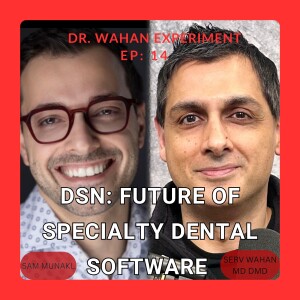
Monday Feb 17, 2025
Monday Feb 17, 2025
keywords
DSN, healthcare technology, cybersecurity, cloud software, dental practice management, AI in healthcare, patient data accessibility, oral surgery, dental software, technology in dentistry
summary
In this conversation, the CEO of DSN discusses his journey into the healthcare technology sector, emphasizing the importance of cybersecurity, the transition from server-based to cloud-based solutions, and the role of AI in enhancing practice management. The discussion highlights the challenges faced by dental specialists and the need for innovative solutions to improve patient care and data accessibility.
takeaways
Sam's background in cybersecurity and software engineering led him to DSN.
DSN aims to simplify practice management for dental specialists.
Cybersecurity is a critical concern in healthcare technology.
The transition to cloud-based solutions offers scalability and ease of access.
AI is set to play a significant role in future innovations at DSN.
Data accessibility is crucial for efficient patient care.
Investing in technology is essential for modern dental practices.
There is a gap between medical and dental software integration.
Feedback from users is valuable for improving DSN's offerings.
DSN prioritizes cybersecurity in its cloud solutions.
titles
Revolutionizing Dental Practice Management with DSN
The Future of Healthcare Technology: Insights from DSN's CEO
Sound Bites
"I saw DSN as a solution for it."
"We want to make the providers life easier."
"We built a scalable solution."
"You are the CEO of your practice."
"We appreciate any feedback we can get."
Chapters
00:00 Introduction to DSN and Its CEO
03:13 The Journey to DSN: Background and Motivation
05:49 Cybersecurity in Healthcare: Challenges and Solutions
09:12 The Evolution of DSN: From Server to Cloud
12:09 AI and Future Innovations in Practice Management
14:59 The Importance of Data Accessibility in Dentistry
17:52 The Role of Technology in Patient Care
20:45 Advice for New Specialists and Future Trends
23:58 Conclusion and Contact Information
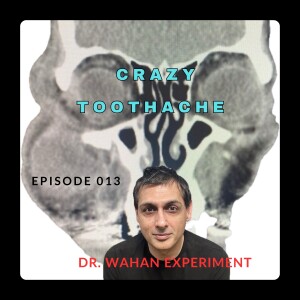
Wednesday Feb 12, 2025
Wednesday Feb 12, 2025
Keywords
dental infection, toothache, oral surgery, antibiotics, patient care, infection progression, surgical intervention, recovery, dental health, emergency care
summary
In this conversation, Dr. Serv Wahan discusses a complex case of a dental infection that began with a simple toothache and escalated into a serious condition requiring surgical intervention. He emphasizes the importance of recognizing symptoms, the risks associated with tooth infections, and the critical role of timely medical care. The discussion covers the patient's journey through various treatments, the challenges faced, and the eventual recovery, highlighting key lessons learned in dental health management.
takeaways
Toothaches can lead to serious infections if untreated.
Recognizing symptoms early is crucial for effective treatment.
Bacteria from dental infections can spread to other parts of the body.
Antibiotic treatment must be monitored for effectiveness.
Surgical intervention may be necessary in severe cases.
Trismus can indicate a serious underlying issue.
Emergency care may be required for dental infections.
Patient history is important in diagnosing infections.
Experience plays a vital role in assessing patient conditions.
Follow-up care is essential to prevent complications.
Titles
From Toothache to Surgery: A Dental Journey
Sound Bites
"It started from a simple toothache."
"This is not a normal progression."
"Everything worked out great in the end."
Chapters
00:00 Introduction to a Dental Infection Case
02:30 Understanding Tooth Infections and Their Risks
05:51 The Patient's Journey: From Toothache to Hospitalization
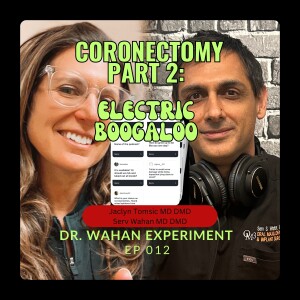
Monday Jan 13, 2025
Monday Jan 13, 2025
keywordsflap reflection, coronectomy, wisdom teeth, extraction techniques, dental surgery, post-operative care,complications, dental instruments, patient management, oral surgery
summaryIn this conversation, Dr. Serv Wahan and Dr. Jaclyn Tomsic discuss various aspects of dental surgery,focusing on flap reflection techniques, the decision-making process between coronectomy andextraction, and the instruments used in wisdom teeth removal. They emphasize the importance ofdocumentation in avoiding litigation and share insights on managing complications and post-operativecare. The discussion also covers the indications and contraindications for performing a coronectomy,highlighting the need for careful patient assessment and surgical technique.
takeawaysSmall hole, big problem is a key principle in flap reflection.Always aim to extract the tooth if possible.Documentation is crucial to protect against litigation.Understanding the anatomy is vital to avoid nerve damage.Post-operative care is essential for patient recovery.Coronectomy can be a safer option in certain cases.Instruments should be chosen based on the specific case needs.Monitoring healing is important to identify complications early.Patient comfort and understanding are key during consultations.Indications for coronectomy include teeth close to nerves.
titlesMastering Flap Reflection Techniques
Sound Bites"Small hole, big problem.""It's a valid procedure, honestly.""You have to remove more bone."
Chapters00:00 Flap Reflection Tips and Techniques
01:48 Coronectomy vs Extraction: Decision Making
05:58 Instruments and Techniques for Wisdom Teeth Removal
10:01 Managing Complications and Post-Operative Care
13:50 Indications and Contraindications for Coronectomy
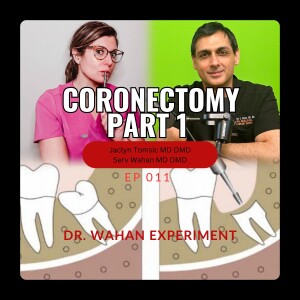
Monday Jan 06, 2025
Monday Jan 06, 2025
keywordscoronectomy, oral surgery, mandibular third molars, nerve injury, post-operative pain, surgical techniques,patient communication, dental procedures, oral health, wisdom teeth
summaryIn this conversation, Dr. Serv Wahan and Dr. Jaclyn Tomsic discuss the intricacies of coronectomies, asurgical procedure primarily performed on mandibular third molars. They delve into the definition,indications, risks, and post-operative outcomes associated with coronectomies. The discussion highlightsthe importance of patient communication, surgical techniques, and the evolving understanding of thisprocedure within the dental community. Through various studies and personal experiences, theyemphasize the need for careful decision-making to minimize complications and enhance patient care.
takeawaysCoronectomies involve the intentional retention of tooth roots.The procedure is primarily indicated for patients over 25 years old.Post-operative pain can vary between coronectomies and extractions.Efficiency in surgery can reduce recovery time and pain.Patient education is essential to avoid misunderstandings about risks.The risk of nerve injury increases with age and complexity of the case.Studies show that root migration can occur but is often manageable.Using PRF can aid in healing, though its necessity is debated.Communication with patients about potential outcomes is crucial.Coronectomies are becoming more accepted in dental practice.
titlesExploring Coronectomies: A Comprehensive GuideThe Art of Coronectomies in Oral Surgery
Sound Bites"Post-op pain is a significant finding.""The goal is to prevent a nerve issue.""Patient communication is crucial in surgery.""Do no harm is our guiding principle."
Chapters00:00
Introduction and Overview of Coronectomies00:57Understanding Coronectomies: Definition and Indications03:13Risks and Complications of Coronectomies06:07Post-Operative Outcomes and Studies09:52Surgical Techniques and Considerations14:07Patient Communication and Decision Making17:49Future of Coronectomies and Conclusion
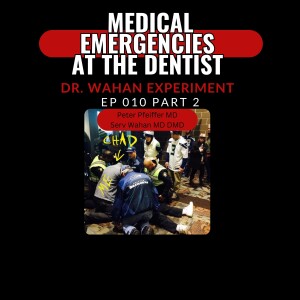
Tuesday Nov 26, 2024
Tuesday Nov 26, 2024
keywords
perioperative emergencies, cardiac events, daylight savings, medical emergencies, simulation training, allergic reactions, patient management, anesthesia, emergency preparedness, healthcare training
summary
In this conversation, Dr. Serv Wahan and Dr. Peter pfeiffer discuss various aspects of perioperative emergencies, including the prevalence of cardiac and respiratory issues during surgeries, the impact of daylight savings time on cardiac events, and real-life experiences with medical emergencies. He emphasizes the importance of having proper training and equipment, such as AEDs, in medical settings. The discussion also covers the management of hypotension and hypertension in patients, allergic reactions, and the significance of simulation training for emergency preparedness. Overall, the conversation highlights the critical nature of being prepared for medical emergencies in both dental and medical practices.
takeaways
Perioperative emergencies are relatively rare but can be serious.
Daylight savings time can increase the risk of cardiac events.
Real-life experiences in emergencies highlight the need for preparedness.
AEDs are essential in any medical or dental office.
Training and simulation improve emergency response skills.
Managing blood pressure in patients requires careful consideration.
Allergic reactions can escalate quickly and require immediate action.
Epinephrine is crucial for treating anaphylaxis.
Experience and training are vital in handling emergencies.
Emergencies can happen to anyone, regardless of experience.
titles
Navigating Perioperative Emergencies
The Hidden Dangers of Daylight Savings
Sound Bites
"Daylight savings time causes heart attacks."
"AEDs save lives. That's a thing."
"You need this. Nobody could find an AED."
"You have to have reps, right?"
Chapters
00:00 Understanding Perioperative Emergencies
03:03 The Impact of Daylight Savings on Cardiac Events
05:55 Real-Life Emergency Experiences in Medical Settings
09:13 Managing Hypotension and Hypertension in Patients
12:06 Addressing Allergic Reactions and Anaphylaxis
14:57 The Importance of Simulation Training for Emergencies
19:11 The Role of Experience in Emergency Situations
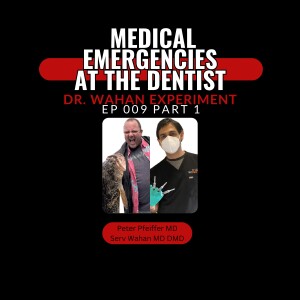
Monday Nov 18, 2024
Monday Nov 18, 2024
keywords
medical emergencies, dental office, anesthesia, airway issues, syncope, laryngospasm, bronchospasm, patient safety, sedation, anesthesiology
summary
In this conversation, Dr. Serv Wahan and Dr. Peter Pfeiffer discuss critical medical emergencies that can occur in dental settings, focusing on anesthesia-related issues. They explore common emergencies such as syncope, the differences between laryngospasm and bronchospasm, and the protocols for managing these situations effectively. The discussion emphasizes the importance of preparedness in dental offices, including the necessity of monitoring equipment and understanding patient safety during sedation procedures.
takeaways
Medical emergencies in dental offices are common and require preparedness.
Syncope is the most frequent emergency, often caused by fainting.
Proper monitoring equipment, like pulse oximeters, is essential in dental practices.
Laryngospasm can occur during sedation and requires immediate attention.
Understanding the difference between laryngospasm and bronchospasm is crucial for management.
Efficient management of emergencies can reduce patient risks and improve outcomes.
Anesthesiologists play a vital role in complex dental procedures.
Training and experience in anesthesia can vary significantly among dental professionals.
Patient safety protocols should be in place for all sedation procedures.
Communication and teamwork are key in managing medical emergencies in dental settings.
titles
Navigating Medical Emergencies in Dental Practices
The Role of Anesthesia in Dental Emergencies
Sound Bites
"I've seen dental students faint."
"If you see someone pass out, lay them down."
"Laryngospasm is a cough gone haywire."
"Halcion has a little amnesia with it."
Chapters
00:00 Introduction to Medical Emergencies in Dental Settings
04:23 Common Medical Emergencies: Syncope and Fainting
10:08 Understanding Airway Complications: Laryngospasm vs. Bronchospasm
16:12 Managing Laryngospasm: Techniques and Protocols
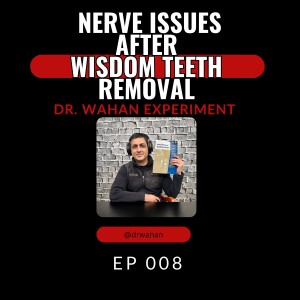
Sunday Oct 27, 2024
Sunday Oct 27, 2024
keywords:
wisdom teeth, nerve injury, dental surgery, oral surgery, risk factors, patient management, supplements, recovery, dental health, oral maxillofacial surgery
summary:
In this conversation, Dr. Serv Wahan discusses the findings from a recent study on the risk factors associated with inferior alveolar nerve injury during the extraction of impacted lower mandibular third molars. He emphasizes the importance of understanding these risks, the management of potential nerve issues post-surgery, and the role of certain supplements in aiding nerve recovery. The discussion is rooted in practical insights from his extensive experience in oral and maxillofacial surgery.
takeaways
The Journal of Oral Maxillofacial Surgery published significant findings.
CT scans are not routinely necessary for wisdom teeth extractions.
17% of patients may experience nerve issues post-extraction.
Chiseling teeth increases the risk of nerve injuries.
Age and gender are important risk factors for nerve complications.
Steroids can help mitigate nerve issues after surgery.
Nerve injuries can be temporary or permanent.
Certain supplements can aid in nerve recovery post-surgery.
Patient management is crucial for minimizing long-term nerve issues.
Experience of the surgeon plays a vital role in outcomes.
titles
The Role of Supplements in Nerve Recovery
Navigating Wisdom Teeth: Risks and Recovery
Sound Bites
"I don't routinely get CT scans for wisdom teeth."
"17% of patients had some nerve issue after surgery."
"Chisels had more nerve issues than drills."
Chapters
00:00 Introduction and Overview of the Journal
03:02 Understanding Nerve Injuries in Wisdom Tooth Extractions
05:50 Risk Factors for Nerve Injuries During Extractions
08:59 Management of Nerve Issues Post-Extraction
11:49 Supplementation for Nerve Recovery
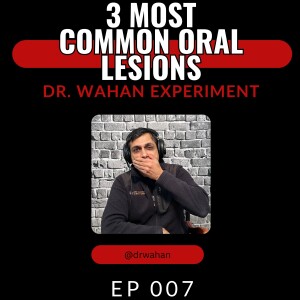
Monday Aug 26, 2024
Monday Aug 26, 2024
Summary
This conversation discusses common oral lesions, specifically dry mouth, candidiasis (fungal infection of the mouth), and canker sores (aphthous ulcers). The prevalence, causes, symptoms, and treatment options for each condition are explored.
Dry mouth can be caused by medications and can lead to dental issues and bad breath.
Candidiasis is an opportunistic infection that can be triggered by an imbalance in the oral cavity.
Canker sores are the most common oral lesion and can be caused by nutritional deficiencies and certain toothpaste ingredients.
Treatment options include medications, natural remedies, and lifestyle changes.
Keywords
oral lesions, dry mouth, xerostomia, candidiasis, fungal infection, canker sores, aphthous ulcers, prevalence, causes, symptoms, treatment options.
Takeaways
Dry mouth, or xerostomia, is a common condition that can be caused by medications and can lead to dental issues and bad breath.
Candidiasis is an opportunistic fungal infection that can occur in the mouth due to an imbalance in the oral cavity.
Canker sores, or aphthous ulcers, are the most common oral lesion and can be caused by nutritional deficiencies and certain toothpaste ingredients.
Treatment options for these oral lesions include medications, natural remedies, and lifestyle changes.
Titles
Understanding and Managing Dry Mouth
Preventing and Treating Candidiasis in the Mouth
Sound Bites
"What is fricking spit? What is saliva? It's really water."
"Dry mouth can lead to fungal infections, dental caries, dysphagia, and bad breath."
"Fungal infections in the mouth are opportunistic and require an imbalance in the oral cavity to occur."
Chapters
00:00 Introduction and Overview
02:15 Dry Mouth: Causes, Symptoms, and Effects
08:02 Candidiasis: Opportunistic Fungal Infection
11:18 Canker Sores: Common Oral Lesion
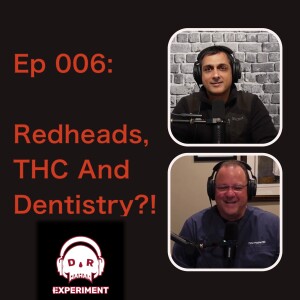
Tuesday Jul 16, 2024
Tuesday Jul 16, 2024
Summary
In this conversation, Dr. Serv Wahan and Dr. Peter Pfeiffer discuss the challenges of anesthesia and sedation for redheads and marijuana users in dentistry. Redheads have a different way of experiencing pain and may require more medication for sedation and local anesthesia. Marijuana use can affect anesthesia and sedation, as well as post-operative pain and nausea. However, there is a lack of research due to the federal illegality of marijuana. The conversation highlights the need for individualized protocols and patient education in these cases.
Keywords
redheads, anesthesia, sedation, dentistry, marijuana, local anesthesia, IV sedation, general anesthesia, pain management
Takeaways
Redheads may require more medication for sedation and local anesthesia due to their different pain perception.
Marijuana use can affect anesthesia and sedation, as well as post-operative pain and nausea.
There is a lack of research on the effects of marijuana in dentistry due to its federal illegality.
Individualized protocols and patient education are important in managing anesthesia and sedation for redheads and marijuana users.
Titles
Navigating the Lack of Research on Marijuana in Dentistry
Challenges of Anesthesia and Sedation for Redheads in Dentistry
Sound Bites
"Redheads have a different way of experiencing pain and cold temperatures, they will notice more, but it hurts less."
"Patients that are 16, 17 years old now are raised differently than they were when I was 16 and 17. You know, I think every generation kind of does."
"Marijuana is legal in a lot of states. Okay, that's fine. But technically it's still illegal federally."
Chapters
00:00 Introduction and Background
01:51 Challenges of Anesthesia and Sedation for Redheads
13:05 The Impact of Marijuana Use on Anesthesia and Sedation
23:23 Difficulties in Managing Anesthesia and Sedation for Redheads and Marijuana Users
26:36 Individualized Protocols and Patient Education
#redheads #redhead #marijuana #marijuanaanddentistry #dentalanesthesia









